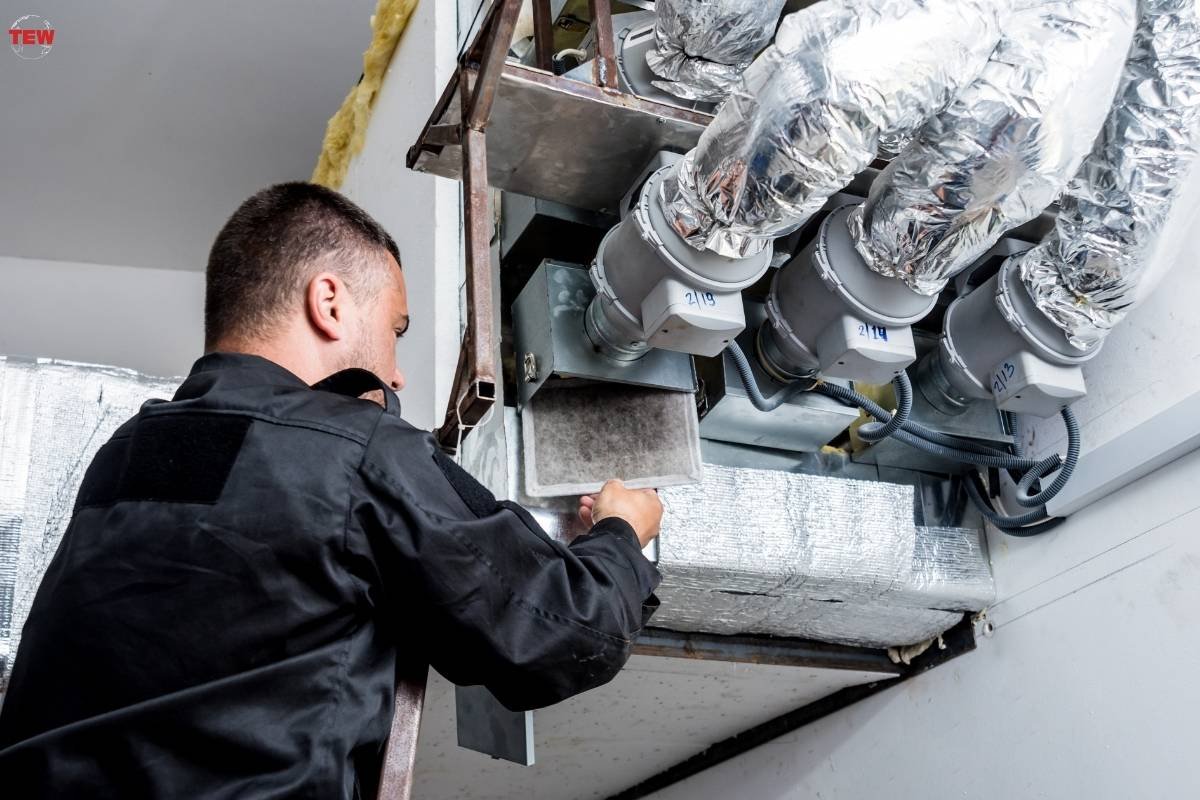In the dynamic and high-paced steel industry world, efficiency and safety are paramount. One often overlooked yet critical aspect of steel manufacturing is the management of airborne dust particles.
Dust generated during various processes poses serious risks to both the environment and the health of workers. Implementing robust dust collection systems has become indispensable in addressing these concerns and ensuring the sustainable and safe operation of steel plants.
The Steel Industry and Dust Emissions
The steel industry is a major source of particulate matter emissions in the United States. According to the US Environmental Protection Agency, it’s also one of America’s largest industrial sources of air pollution.
This will increase further with the demand for steel in the US. According to a recent interview published in the GMK Center, construction will be a key growth driver in the US. Thus, the steel demand was expected to increase to 112 million tons by the end of 2023. This was an increase from the demand of 94 million tons in 2022.
This is good news for the steel industry, which saw a steep decline in 2022. According to Statista, the steel industry in the US was worth $133 billion in 2021, and the figure stood at around $97 billion in 2022. This was a decrease of roughly 27.3%. While good for the steel industry, it is worrying in terms of air pollution.
According to the Clean Air Company, this industry creates goods by grinding, polishing, welding, and cutting steel. This can produce fumes, mist, and metal particulates. These contaminants are hazardous to human and animal health.
The staff and other people and animals residing near the steel plant can inhale dust emissions from the steel industry. Hence, dust collection systems are crucial for this industry because they help prevent harmful dust from escaping into the atmosphere.
Role of Dust Collection Systems

Dust collection systems are an integral part of any steel mill, and they’re used to collect dust from the workplace. Their importance is twofold. Firstly, they help protect workers in the steel industry from breathing in harmful particles. Secondly, they can be used to comply with regulations.
Dust collection systems can be found in most modern manufacturing facilities where large machines produce high levels of particulate matter (PM). This type of equipment includes blast furnaces, rolling mills, and coke ovens, all common sights in a steel mill.
These systems are found in steel mills and at any factory manufacturing metal products. Metal dust collection systems are used here because these machines produce large amounts of PM. The PM can irritate or even damage the lungs if inhaled without protection. This makes them ideal candidates for being fitted with dust suppression technology such as filters or bag houses.
Many benefits are associated with this type of equipment installed on-site at your business. For instance, it offers improved productivity rates due to less downtime caused by injuries sustained by employees. An efficient dust collection system may be necessary to keep your workplace safe and healthy for everyone involved.
Environmental and Regulatory Compliance
The steel industry is subject to several environmental and regulatory requirements. For example, there’s the EPA’s National Ambient Air Quality Standards (NAAQS). It requires the steel industry to reduce its emissions of nitrogen oxides (NOx), sulfur dioxide (SO2), and particulate matter (PM).
These regulations are placed to mitigate the risk of metal dust and its environmental impact. According to the Americal Iron and Steel Institute, the U.S. steel industry emits 1-2% of the total U.S. greenhouse gas emissions.
These regulations can be challenging for companies in this sector who are trying to maintain profitability while complying with stringent standards. The good news is that solutions are available that can help ensure your company meets these requirements while staying competitive. One such solution is the dust collection system designed specifically for steel mills and other industrial operations.
The EPA has also asked Electric Arc Furnaces (EAF) to comply with the PM standards for emissions. Constructing carbon steel takes 1.5 to 5 hours, and alloy steel takes 5 to 10 hours. All the stages of producing these types of steel produce PM. Hence, the EPA proposed that EAF facilities comply with the best standards for PM emissions.
Health and Safety Benefits

One of the most important benefits of a dust collection system is that it reduces the dust workers are exposed to daily. This can lead to improved health and safety conditions for workers. It can also benefit employers by lowering costs due to fewer lost work days and workers’ compensation claims.
Here are some health and safety benefits of dust collection systems in the steel industry:
Respiratory Protection
Steel manufacturing processes often produce airborne particulate matter, including metal dust, fumes, and other potentially hazardous substances. Inhaling these particles can lead to respiratory problems and long-term health issues. Dust collection systems help capture and remove these airborne contaminants, providing workers with cleaner and safer air quality.
Reduced Respiratory Diseases
Continuous exposure to airborne pollutants in steel mills can lead to respiratory diseases such as pneumoconiosis, chronic bronchitis, and asthma. Dust collection systems significantly reduce the concentration of airborne particles, minimizing the risk of respiratory diseases among workers.
Improved Visibility
Excessive dust in the air can reduce visibility in the workplace, increasing the risk of accidents and injuries. Dust collection systems help maintain clear air by capturing and removing particulates, contributing to better visibility and a safer working environment.
Fire Prevention
Some metal dust in the steel industry can be combustible and pose a fire hazard. Dust collection systems improve air quality and reduce the risk of dust accumulation in work areas, helping to prevent the potential for dust-related fires.
Compliance With Regulations

Many countries and regions have strict regulations and standards regarding workplace air quality and occupational health. Implementing dust collection systems ensures the steel industry complies with these regulations, avoiding legal issues and penalties.
Environmental Impact
Dust collection systems not only protect the health and safety of workers but also contribute to reducing the environmental impact of steel manufacturing. By capturing and controlling dust emissions, these systems help prevent the release of pollutants into the surrounding air and water.
Economic Advantages
Installing dust collection systems can also offer numerous economic advantages, such as:
- Reduced maintenance costs: If your facility has a well-designed dust collection system, the frequency of maintenance will be reduced. Hence, you’ll need less downtime to perform inspections and repairs.
- Reduced labor costs: Fewer accidents mean fewer workers’ compensation claims, which saves you money on insurance premiums and employee turnover costs.
- Increased worker productivity: A cleaner and healthier working environment can positively impact the well-being and productivity of workers. By reducing exposure to harmful dust and fumes, employees are less likely to suffer from health issues, leading to increased productivity and reduced absenteeism.
- Reduced energy costs: The more efficient your equipment is, the less fuel it uses–and that means lower operating expenses for you.
Technological Advances in Dust Collection
The steel industry has benefited from technological advances in dust collection. One of these is electrostatic precipitators. These are designed to remove fine particles from air streams by creating an electrical charge on the surface of each particle. They then attract the dust particles to a collecting device.
Another advancement is baghouse filters, which rely on airflow to draw dust particles into an outer layer of fabric bags. These bags are made from synthetic materials such as cellulose or glass fibers.
According to Market Data Forecast, Parker Hannifin Corp launched the pleated baghouse filter for customers in 2022. These bags collect dust in an atmosphere with high temperatures. They also help save installation and removal costs, as they can remove cages and bags.
To conclude, dust collection systems are an essential part of the steel industry, and they have been for decades. They help to reduce the amount of particulate matter that escapes into the atmosphere and protect workers from inhaling harmful dust particles. These systems also protect against fires by removing combustible materials from areas where sparks could ignite them.




